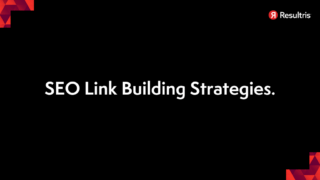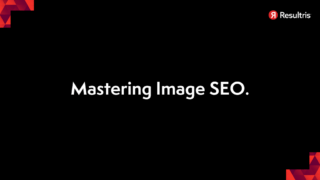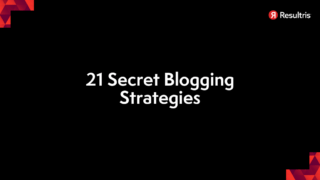
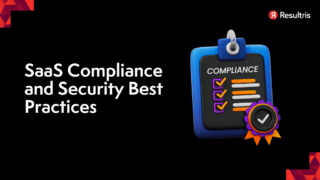
Blogs can enhance your SaaS marketing funnel by driving organic traffic, establishing authority and trust, nurturing leads through educational content, addressing potential objections, and encouraging conversions and customer retention. Regular, high-quality blog posts boost SEO, highlight product features and benefits, and foster community engagement, streamlining the customer journey from awareness to conversion.
Are you looking to give your SaaS software marketing efforts a big, hefty boost? If so, you’re in the right place. Today, we’re diving into the world of blogging and exploring how it can turbocharge your marketing funnel.
Before we hit the gas pedal, let’s make sure we’re all on the same page. We’re dealing with three key concepts here: SaaS (Software as a Service), the marketing funnel, and blogging.
SaaS is all about delivering software over the internet where customers access it via a subscription basis. The marketing funnel represents your customer’s journey from first contact to final purchase. And blogging? It’s an online platform updated regularly with fresh, juicy content, serving as a killer tool for content marketing.
The connection between these concepts? That’s what we’re here to uncover.
Traditionally, marketers have relied on the AIDA model (Awareness, Interest, Desire, Action) to define the stages of a customer’s journey. But in the digital landscape of today, this linear approach often falls short. Customer journeys can be more akin to a multi-dimensional spider web than a simple funnel, swinging from one stage to another in no particular order.
Enter the Flywheel approach, developed by HubSpot, which serves as a more apt metaphor for today’s customer journey. The Flywheel model presents the marketing process as a circular, momentum-driven model rather than a linear one. At its core, it recognizes the critical role that existing customers play in attracting new ones – through reviews, testimonials, referrals, and more.
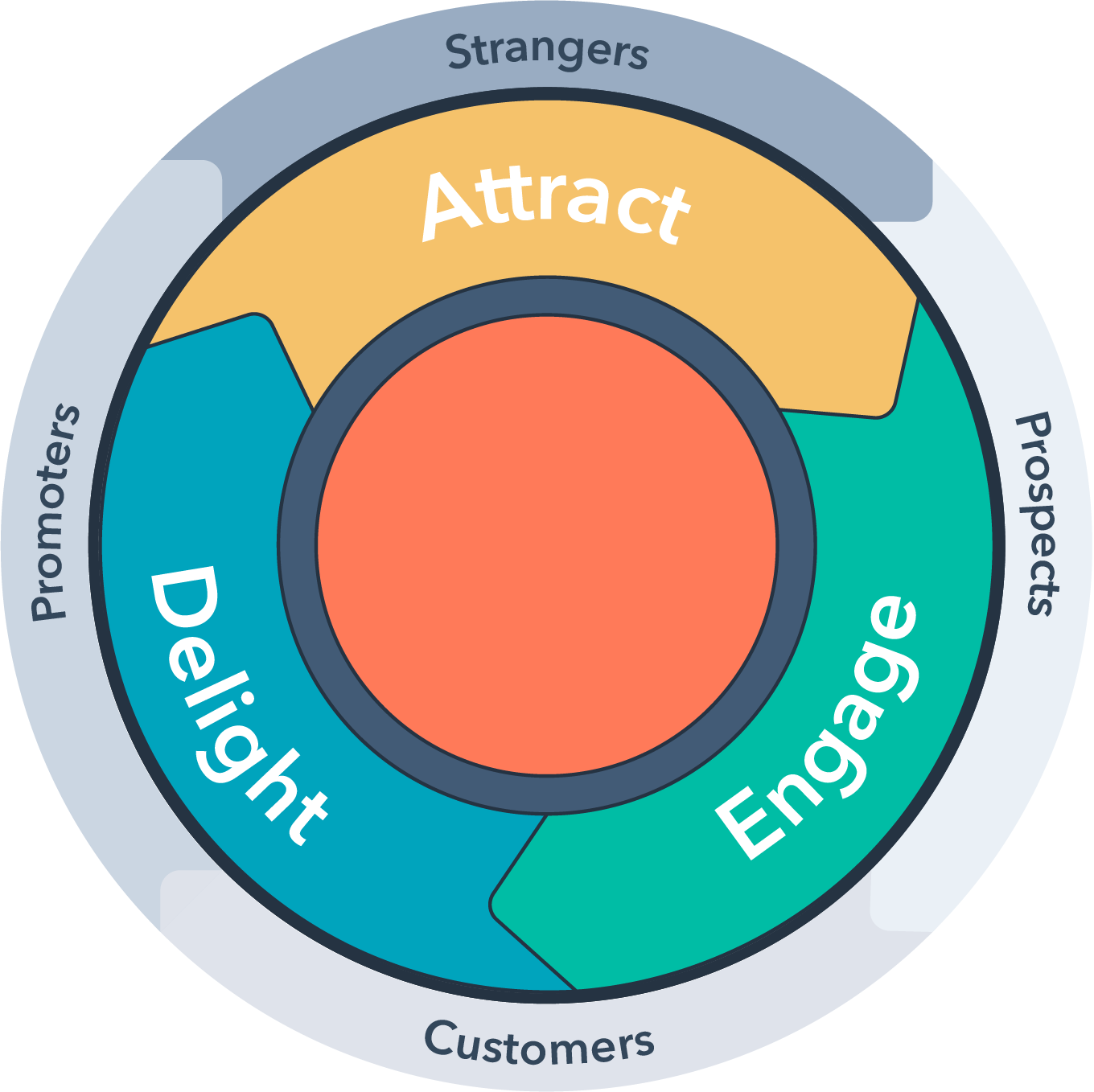
The Flywheel consists of three stages: Attract, Engage, and Delight.
Attract: In this stage, just like the awareness stage in the traditional funnel, you aim to draw in the right prospects by providing value through content that resonates with them. Here, blogs can play an essential role in addressing your potential customer’s pain points and establishing your brand’s credibility.
Engage: Here, you start building deeper relationships with your customers. Your blog can cater to this by offering in-depth resources, showcasing your product’s benefits, and demonstrating its real-world application. This stage aims to make it easy for potential customers to buy from you.
Delight: In the final stage, the goal is to provide an exceptional experience that not only satisfies customers but turns them into advocates for your brand. You achieve this by continuing to engage customers with useful content, showing appreciation, and providing excellent customer service.
Understanding your specific customer journey, whether it resembles a traditional funnel, a flywheel, or a completely unique shape, is absolutely crucial. Only then can you create a blog strategy that effectively guides your customers along their journey with your brand.
Where to Start? Your goal in the Attract stage is to draw the right prospects by providing value through content. Begin by clearly understanding your buyer personas – their needs, pain points, and the topics that resonate with them.
What to Write? Craft blog posts that offer solutions to the problems your target persona faces, or provides insightful industry trends and data. For instance, if your target persona is an eCommerce business owner, posts like “How AI is Revolutionizing eCommerce” or “5 Common eCommerce Pain Points and How to Overcome Them” would hit the mark.
How to Ramp It Up? As you generate more content, focus on varying your content formats. Infographics, videos, podcasts, and long-form articles each have their unique strengths. Monitor your engagement metrics to understand what works best with your audience, and adjust your strategy accordingly.
What is the Goal? The goal in this stage is to establish your brand as a trusted, authoritative voice in your industry. By offering valuable content, you can attract high-quality traffic to your site and start building relationships with potential customers.
Where to Start? In the Engage stage, you’ve attracted a potential customer, and now you want to deepen that relationship. Begin by creating content that clearly communicates your product’s benefits and showcases its application in real-world scenarios.
What to Write? Write comprehensive guides and how-tos on using your product, or create case studies detailing how your product has helped others. Continuing with the eCommerce persona, articles like “The Definitive Guide to Using Our AI Solution for Your eCommerce Store” or “Success Story: How Our AI Solution Helped Boost ABC eCommerce’s Sales by 60%” would be effective.
How to Ramp It Up? Increase engagement by integrating interactive elements into your blog posts. This could include quizzes, surveys, or even interactive infographics. Also consider offering downloadable resources related to your blog content, such as eBooks or templates.
What is the Goal? The goal here is to foster a deeper connection with your audience, transforming casual visitors into serious prospects. You’re building a strong case for your product and showing your audience how it could benefit them.
Where to Start? The Delight stage is all about nurturing existing customers and turning them into brand advocates. Start by understanding what your customers need to succeed with your product, and the common questions or issues they may have.
What to Write? Write in-depth tutorials, FAQ posts, or feature updates that help customers make the most out of your product. For example, you could write a post like “Top 5 Underutilized Features in Our AI Solution and How to Use Them” or “Common Questions About Our AI Solution Answered”.
How to Ramp It Up? Showcase your appreciation for your customers through customer spotlight posts or by sharing user-generated content. You could also host webinars or live Q&A sessions, promoting them through your blog.
What is the Goal? The aim here is to ensure customers remain happy with your product and your company. Delighted customers not only continue to use your product, but they also become advocates for your brand, attracting more potential customers to your blog and product.
Remember, no matter which stage you’re writing for, keep your target persona in mind, provide real value, and be consistent. Tailoring your blog content to each stage of the Flywheel allows you to provide the right information at the right time, ensuring you attract, engage, and delight your customers effectively.
Despite this non-linear journey, blogs can play a pivotal role at every potential stage of your customer’s interaction with your brand.
Now that you understand the importance of blogging across the various stages of your marketing funnel, let’s take a deep dive into what kinds of blogs work best for each stage, where to start, how to ramp it up, and what your ultimate goal should be. This is where the rubber meets the road, so let’s drive straight in!
Where to Start? The goal in the awareness stage is not about reaching everyone; it’s about reaching the right ones – those potential customers who are the perfect fit for your SaaS product. Using well-defined SaaS buyer personas can guide your efforts here. Start by understanding the pain points, questions, or problems that your target persona might experience.
What to Write? Write blog posts that speak directly to these pain points and provide helpful insights or solutions. For example, if your buyer persona is a project manager struggling with remote work coordination, a blog post titled “How to Overcome the Top 5 Challenges of Remote Project Management” would resonate with them. By using relevant keywords and addressing specific issues, you’ll improve your SEO and attract high-quality, organic traffic to your site.
How to Ramp It Up? As you continue to publish consistently, deepen your understanding of your buyer personas. Analyze what content formats – be it infographics, videos, or podcasts – they prefer and diversify your content accordingly. Also, don’t shy away from exploring new or emerging pain points that your personas may be facing.
What is the Goal? The goal at this stage is to attract high-quality traffic to your website – potential customers who are likely to be interested in your SaaS product. By focusing on the specific issues and challenges faced by your buyer personas, you boost your chances of connecting with the people who are most likely to eventually convert into customers.
Where to Start? At the interest stage, your audience is aware of your brand, so your aim should be to engage them further. Start by deep-diving into the benefits and features of your SaaS product.
What to Write? Write blog posts that detail the features of your product, compare your product with competitors, or highlight the benefits of using your product. Include case studies that demonstrate how your product has helped other businesses. Posts like “How Our Project Management Tool Streamlines Remote Work” or “A Closer Look at Our Features: What Makes Our Tool Unique” work well.
How to Ramp It Up? Ramp up by offering downloadable resources such as whitepapers, guides, or ebooks related to your posts. You can also host webinars and promote them through your blog.
What is the Goal? The goal here is to foster engagement, build credibility, and develop a deeper connection with your potential customers.
Where to Start? In the desire stage, your potential customers are considering making a purchase. Here, you should start showcasing the tangible results that your product can deliver.
What to Write? Write success stories, testimonials, and detailed case studies. A blog post like “How Our SaaS Tool Helped XYZ Company Improve Productivity by 50%” provides social proof and instills a desire in the reader to achieve similar results.
How to Ramp It Up? To enhance these posts, consider incorporating videos of customer testimonials or conducting interviews with satisfied customers. Make it real, make it relatable!
What is the Goal? The goal at this stage is to build desire for your product by clearly demonstrating its value and positive impact.
Where to Start? Now that you’ve built desire, it’s time to inspire action. Start by creating content that provides a clear and compelling call to action.
What to Write? Write blog posts that offer a limited-time discount, a special promotion, or a free trial of your product. A post like “Get Started with Our Free Trial – No Credit Card Required!” or “Limited Time Offer: Get 20% Off Your First Year” can motivate readers to take the final leap and make a purchase.
How to Ramp It Up? You could enhance this stage by creating a sense of urgency through limited-time offers or showcasing a count of satisfied customers to reinforce the value proposition.
What is the Goal? The goal at this stage is to convert the potential customer into a paying one. The emphasis should be on creating compelling, action-oriented content that nudges the reader towards a purchase decision.
Each stage requires a unique approach to blogging. By tailoring your content to your customer’s journey, you ensure that you’re providing the right information at the right time, gently guiding your potential customer from awareness to action. It’s a journey, and each blog post is a step towards the destination – a converted, satisfied customer.
Don’t just stop at traditional blogs. Expand your horizons! Consider guest blogging or partnering with influencers to extend your reach. Experiment with video content or add interactive quizzes and surveys to make your blog more engaging. A multimedia approach can make your blog feel more like a living, breathing entity than a static page.
Now, let’s hit the brakes for a second and consider a few assumptions. Do blogs always enhance a SaaS content marketing funnel? Well, it depends on the quality of the content, how relevant it is to your audience, and how consistently you post. And is a blog the only way to enhance a SaaS marketing funnel? Absolutely not! It’s one tool in a big toolbox that includes email marketing, social media marketing, SEO, paid advertising, and more.
So, you’ve started blogging – that’s great! But how do you know if it’s working? That’s where KPIs come in. By tracking metrics like traffic, time spent on the page, click-through rates, conversion rates, and number of leads generated, you can gauge the effectiveness of your blog and fine-tune your strategy accordingly.
And there you have it! A deep dive into how blogging can enhance your SaaS marketing funnel. It’s a versatile tool that can educate your customers, build their trust, and gently guide them down the path to conversion. But remember, it’s just one part of a broader, comprehensive marketing strategy.
So, what are you waiting for? Start exploring the potential of blogging for your SaaS company today and watch your marketing efforts go from zero to sixty in no time!


